Science

All aboard the moon train: NASA's futuristic transport system revealed
NASA has unveiled plans for the first lunar railway system, vital for sustainable lunar bases envisioned by the 2030s. The system, part of the Moon to Mars initiative, features FLOAT (Flexible Levitation on a Track) technology. FLOAT employs magnetic robots gliding on a three-layered flexible film track, minimizing dust abrasion. Phase 2 involves testing prototypes in lunar-analogue environments, addressing technology gaps, and ensuring long-term operation for human exploration activities on the Moon.

Sun shoots out biggest solar flare in almost 2 decades
Florida witnessed its strongest sun flare in almost 20 years, part of the 11-year solar cycle peak. The X8.7-rated flare, captured by NASA's Solar Dynamics Observatory, followed severe solar storms. The National Oceanic and Atmospheric Administration played a crucial role in monitoring the event. Bryan Brasher at NOAA's Space Weather Prediction Center in Boulder, Colorado highlighted the flare's intensity.

Powerful solar storm impacts Earth, says ISRO
A powerful solar storm from Sun's region AR13664 hit Earth in May 2024, causing disruptions to communication and GPS systems. ISRO reported an intense geomagnetic storm with X-class flares and Coronal Mass Ejections (CMEs). The event, comparable to the historic Carrington event, led to trans-polar flight diversions. ISRO observed effects on the Ionosphere and radio wave reflection.

Study identifies 10 fold faster rise in rate of CO2 emission seen during Ice Age
New research from Oregon State University reveals that carbon dioxide (CO2) emissions are now 10 times faster than any point in the past 50,000 years, surpassing the Ice Age rates. The study found that these emissions could overwhelm the Southern Ocean's ability to absorb CO2, affecting global climate and highlighting the unprecedented nature of current CO2 changes.
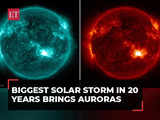
Biggest solar storm in 20 years brings auroras; threatens to impact Earth's communication systems
An ‘extreme’ geomagnetic storm, rated 5 out of 5 by the Space Weather Prediction Center, is underway, reminiscent of 2003. The sun, currently in a phase of heightened activity known as solar maximum, is expected to continue its robust performance through mid-to-late 2024. This surge in solar activity dazzles with vibrant auroras but poses communication disruptions also. With the sun in a heightened phase of solar maximum, potent solar flares and coronal mass ejections will persist, which can impact Earth's ionosphere and GPS systems. The Sun emitted two strong solar flares, peaking at 5:40pm ET on May 8, 2024, and 5:13am ET on May 9, 2024. Shedding light on the current situation, the Scientific Officer of the Institute of Plasma Research Centre Ahmedabad, Dr Ravi A V Kumar said, “Solar flares happen all the time. It’s like the sun is getting at the peak of its activity. The chances of more solar flares coming out at this point is higher. The solar flare that was emitted came out from a very active solar region. Highly charged particles of plasma and these charged particles can travel at a very high velocity. The faster these particle moves more dangerous they are. These charged particles come in contact with the polar region of the earth where they react with the gas molecules of the upper atmosphere and form Aurora Borealis.” Astronomer and Professor RC Kapoor informed, “Currently, the sun is passing through its strong phase of activity. These solar flares are emitted very often but if solar flares are directed toward Earth then it is a bit of a worrying situation. It can cause power cuts and disrupt technological lives.”

Indian space industry offers tremendous opportunity for private players, says ISRO Chief
ISRO Chairman S Somanath highlights the vast potential for growth and development in the Indian space industry, estimating a $9-10 billion industry within 5-10 years. He praises the collaboration between ISRO and private sector companies like SFO Technologies, emphasizing their role in advancing space technology and environmental sustainability initiatives.
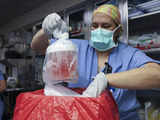
First person to receive a genetically modified pig kidney transplant dies nearly 2 months later
Richard Slayman, 62, passed away two months after a groundbreaking genetically modified pig kidney transplant at Massachusetts General Hospital, offering hope to kidney patients. Surgeons aimed for a two-year kidney lifespan in the Weymouth, Massachusetts man following dialysis complications.
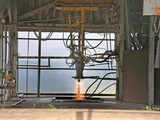
ISRO achieves major milestone with 3D printed rocket engine test
ISRO has achieved a significant milestone by successfully hot testing a liquid rocket engine manufactured using 3D printing technology. The engine, designed for the upper stage of ISRO's PSLV rocket, underwent a comprehensive development program and was tested at ISRO's Propulsion Complex in Mahendragiri. The successful test opens up possibilities for advanced manufacturing techniques in India's space program.

Solar storm strikes Earth, sparking stunning auroras and potential disruptions
A massive solar storm, the strongest in over 20 years, hit Earth, causing stunning auroras and raising concerns about satellite and power grid disruptions. The storm, triggered by several coronal mass ejections from the Sun, was upgraded to an "extreme" geomagnetic storm. Social media was abuzz with photos of the auroras from various parts of the world. Authorities warned satellite operators, airlines, and power grids to take precautions. The storm's effects are expected to be mainly felt in the planet's northern and southern latitudes.
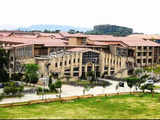
IIT Guwahati develops high-performance materials for supercapacitors
IIT Guwahati researchers led by Prof. Uday Narayan Maiti developed materials improving supercapacitor performance, published in 'Small'. The study introduces novel methods to tackle challenges, offering promise for energy storage applications in various industries.
Must Watch
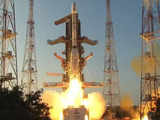
ISRO's breakthrough '3D-printed' rocket engine saves 97 pc raw materials, 60 pc production time
The new engine, now a single piece, saves 97 per cent of raw materials and reduces production time by 60 per cent, ISRO said. ISRO achieved the major milestone with the successful hot testing of a liquid rocket engine manufactured through AM technology for a duration of 665 seconds on May 9, a release from the space agency said.

India to formally convey to ATCM its plans to built new research station in Antarctica
India plans to announce its plans to develop a new research station in Antarctica at the 46th Antarctic Treaty Consultative Meeting (ATCM) and the 26th Meeting of the Committee for Environment Protection. The station, Maitri, is expected to be revamped and turned into a summer camp and monument. The ATCM also aims to regulate tourism in Antarctica, the Earth's only continent without an indigenous population.

Now you can experience falling in a black hole, NASA unveils virtual simulator; Here's how to use the cosmic tool
NASA has unveiled a groundbreaking visualisation that allows the public to take a virtual journey near a black hole, combining scientific theory with digital imagery. Developed by astrophysicist Jeremy Schnittman, this tool offers two scenarios: one where a camera approaches the event horizon and is slingshot back out, and another where it crosses the event horizon, illustrating the intense gravitational pull of black holes.
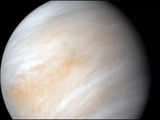
Why Venus is dry, new study explains
Venus loses water due to hydrogen escape caused by molecule HCO+. Research explains the dryness, revealing Venus's water story. Future missions might unveil more about Venus's atmospheric mysteries.
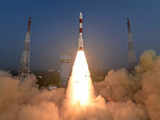
ISRO developing semi-cryogenic engine working on liquid oxygen kerosene
ISRO develops a 2,000 kN semi-cryogenic engine using LOX Kerosene propellant at IPRC, Mahendragiri. LPSC leads with ISRO support, achieving pre-burner ignition test at SIET and PRLD. Triethyle Alumnide is used for ignition.
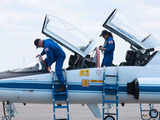
Indian-origin astronaut Sunita Williams set to fly into space for a third time on Tuesday
Indian-origin astronaut Sunita Williams, alongside Butch Wilmore, embarks on a significant mission flying Boeing's Starliner from Florida to the International Space Station, overcoming delays and contributing to the Commercial Crew Programme.
